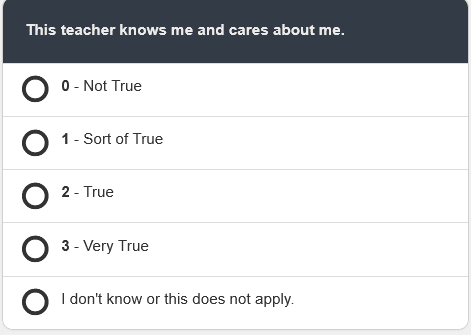NEE’s Research-Based Practices
The Network for Educator Effectiveness is a research-based educator evaluation system. It was developed at the University of Missouri, a research-intensive state flagship university and a member of the prestigious Association of American Universities (AAU).
We take research seriously.
NEE was designed with practical implementation in mind. PK-12 practitioners worked in partnership with researchers to design NEE. We take the lived experience of practitioners and the deep expertise that comes with that seriously. Several districts partnered with us to guide the development of NEE. We consulted with national policy and the Missouri state department of education, as well as the state teachers’ association.
Every detail in NEE was deliberately designed based on research and practical expertise. What follows is a description of the research-based practices that informed the design of NEE’s classroom observation processes, principal training, and the NEE Student Survey.
Classroom Observations
Focus
NEE incorporates 27 teaching practices that are observable in the classroom. Schools can choose which to focus on, based on local needs and priorities. We recommend they only focus on 4 to 6 teaching practices because research shows this is at the stretch point of human working memory capacity.
Impactful Indicators
NEE focuses on teaching practices that research shows have a large effect size. For example, promoting students’ social skills has a powerful effect on student learning. So does promoting critical thinking. These are two of the teaching practices NEE emphasizes.
Separate Scores
In NEE, each teaching practice is scored separately, rather than a holistic score. This is so teachers can identify which practices they are already strong in and which there is room for growth.
0-7 Scale
NEE uses an elongated scale for classroom observations. This is because the research shows that principals tend to rate teachers leniently, near the top of the scale. In teacher evaluation systems that use only a 3- or 4-point scale, almost all teachers score at the top. In order to detect differences among teachers and provide useful feedback, we stretch out the top of the scale. Thus, NEE’s classroom observation scale is 8 points in total.
Multiple Observations
Principals observe each teacher multiple times, because research shows this improves reliability of ratings.
Principal Training
Before principals can enter the NEE Data Tool online evaluation system, they must have completed training in how to conduct classroom observations and how to provide useful feedback.
In training, we use three approaches. This is because the research shows that these are the best practices for enhancing accuracy of performance ratings.
- We use “rater error” training to help raters learn to recognize and avoid leniency and halo errors and to use the full scale.
- We use “performance dimension” training to help raters understand specific teaching practices through didactic research review and discussion.
- We use “practice-with-feedback” training to have raters score selected videos of authentic classes and discuss their ratings with others under guidance.
Student Survey
NEE includes a student survey because research shows that students are reliable raters of teachers’ effectiveness, and use of student surveys is a cost-efficient way to get detailed feedback (while also showing respect for students’ voice). The student survey is completely aligned with the NEE Classroom Observation process, for corroborating evidence on the same teaching practices. In developing the NEE Student Survey, we used research on what words most students in Grades 4-12 can read; we conducted “think alouds” as students took the survey to identify places of confusion; and we conducted statistical analysis to identify and remove any “bad” items.
These are just some examples of how every aspect of NEE was deliberately, intentionally designed based on research.
This doesn’t mean that NEE is perfect – no evaluation system is – but we have worked hard with deep expertise using research to support its development, and we continue to do our best to incorporate users’ suggestions and research findings that make NEE easy to use and powerful in achieving its goal of helping teachers grow.

Free Consultation
Interested in how you can implement research-based evaluation practices for your school or district? Contact NEE for a free consultation.


